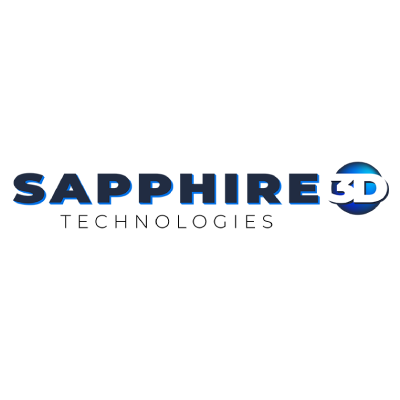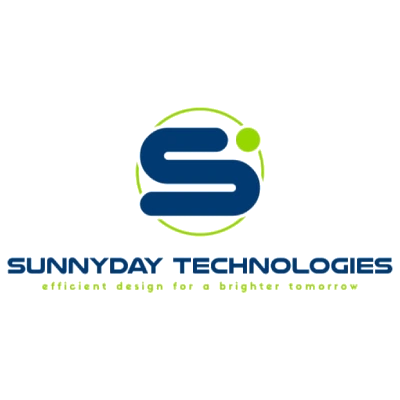Frequently Asked Questions
How does 3D printing improve foundry processes?
3D printing enhances foundry processes by enabling rapid prototyping, reducing material waste, and allowing for complex geometries that traditional methods cannot achieve, ultimately leading to increased efficiency and innovation in metal casting.
Can virtual foundry sintering be used for metal parts?
The Virtual Foundry's sintering process can indeed be used for metal parts. This method effectively transforms 3D printed Filamet™ into fully dense metal components, ensuring high-quality and precise results for various applications.
What are the benefits of virtual foundry sintering?
The benefits of Virtual Foundry sintering include enhanced material strength, improved dimensional accuracy, and the ability to produce complex geometries that traditional manufacturing methods cannot achieve, making it ideal for advanced applications in various industries.
How does virtual sintering differ from traditional methods?
Virtual sintering differs from traditional methods by utilizing advanced digital processes to achieve precise control over temperature and atmosphere, leading to improved material properties and reduced cycle times in metal 3D printing.
What is virtual foundry sintering in additive manufacturing?
Virtual Foundry sintering in additive manufacturing is the process of heating 3D printed parts made from Filamet™ materials to fuse particles together, resulting in strong, dense metal, glass, or ceramic components suitable for various applications.
Can virtual sintering improve part density and strength?
Virtual sintering can significantly enhance part density and strength. By optimizing the sintering process, it allows for improved bonding between particles, resulting in stronger and denser final parts.
Can virtual sintering reduce production time and costs?
Virtual sintering can significantly reduce production time and costs by streamlining the manufacturing process and minimizing material waste, allowing for faster turnaround and more efficient use of resources in metal 3D printing.
What are the benefits of using 3D foundry?
The benefits of using a 3D foundry include enhanced design flexibility, reduced production costs, and the ability to create complex geometries with precision. Additionally, it allows for rapid prototyping and efficient material usage, making it ideal for various industries.
What materials are best for virtual foundry sintering?
The best materials for Virtual Foundry sintering include a range of metals, such as stainless steel, bronze, and titanium, as well as specialized ceramics and glass. These materials are optimized for high-quality, durable results in additive manufacturing.
How does 3D printing enhance design flexibility?
3D printing enhances design flexibility by allowing for the creation of complex geometries and customized shapes that traditional manufacturing methods cannot achieve, enabling designers to innovate and optimize their products without the constraints of conventional techniques.
What industries benefit from virtual foundry sintering?
The industries that benefit from Virtual Foundry sintering include aerospace, automotive, medical, and consumer goods. These sectors leverage advanced additive manufacturing for producing complex metal parts with enhanced performance and efficiency.
How does sintering affect part durability?
Sintering significantly enhances part durability by promoting the bonding of metal particles, resulting in a denser and stronger final product. This process reduces porosity and improves mechanical properties, leading to a more resilient component suitable for various applications.
What is the role of Filamet™ in 3D printing?
The role of Filamet™ in 3D printing is to serve as a unique feedstock material that combines the versatility of traditional filament with the ability to print complex metal, glass, and ceramic parts, enabling advanced additive manufacturing solutions.
Can virtual foundry sintering create complex geometries?
The ability of Virtual Foundry sintering to create complex geometries is significant. Our advanced sintering process allows for the production of intricate designs and detailed structures, making it ideal for a wide range of applications in metal 3D printing.
What are the cost implications of virtual sintering?
The cost implications of virtual sintering involve considerations such as material expenses, energy consumption, and equipment investment. While initial costs may be higher, the efficiency and precision of virtual sintering can lead to long-term savings and reduced waste.
How does 3D printing impact production efficiency?
3D printing significantly enhances production efficiency by reducing material waste, shortening lead times, and enabling complex designs that traditional manufacturing cannot achieve. This streamlining of processes leads to faster prototyping and more agile manufacturing capabilities.
What post-processing is needed after virtual sintering?
Post-processing needed after virtual sintering includes cooling, surface finishing, and any necessary machining to achieve the desired dimensional accuracy and surface quality of the final metal parts.
How does virtual sintering handle different metal types?
Virtual sintering effectively accommodates various metal types by adjusting parameters such as temperature and time to optimize the process for each material's unique properties, ensuring high-quality results tailored to specific metal requirements.
What are common applications for 3D foundry products?
Common applications for 3D foundry products include prototyping, custom tooling, lightweight components, and intricate geometries in industries such as aerospace, automotive, and medical. These applications leverage the unique capabilities of metal 3D printing for enhanced performance and design flexibility.
How does sintering influence material properties?
Sintering significantly influences material properties by enhancing density, strength, and durability. This process helps particles bond at high temperatures, resulting in a more cohesive structure and improved mechanical performance in 3D printed components.
What advancements are being made in virtual foundry technology?
Advancements in virtual foundry technology include enhanced materials for 3D printing, improved debinding and sintering processes, and the development of innovative Filamet™ formulations, all contributing to greater efficiency and precision in additive manufacturing.
How can virtual foundry sintering reduce waste?
The process of Virtual Foundry sintering significantly reduces waste by utilizing precise additive manufacturing techniques, which minimize excess material and optimize resource use, ensuring that only the necessary amount of metal is processed during production.
What challenges exist in virtual foundry sintering?
The challenges in virtual foundry sintering include managing temperature uniformity, preventing warping, and ensuring proper material flow. These factors are crucial for achieving optimal density and mechanical properties in the final printed components.
How does 3D printing compare to traditional manufacturing?
3D printing offers advantages over traditional manufacturing by enabling complex designs, reducing waste, and allowing for rapid prototyping. It often requires less upfront investment and can produce customized parts more efficiently.
What certifications are needed for 3D foundry services?
The certifications needed for 3D foundry services typically include ISO 9001 for quality management, AS9100 for aerospace applications, and specific material certifications depending on the metals or materials being used.
How can I optimize designs for virtual sintering?
Optimizing designs for virtual sintering involves ensuring proper geometry, maintaining adequate support structures, and minimizing overhangs. Additionally, consider material properties and thermal management to enhance sintering effectiveness and achieve desired results.
What is the future of 3D printing in foundries?
The future of 3D printing in foundries is poised for significant growth, driven by advancements in materials and technology that enhance efficiency, reduce waste, and enable complex designs, ultimately transforming traditional manufacturing processes.
How does virtual sintering affect production timelines?
Virtual sintering significantly impacts production timelines by streamlining the post-processing phase. This advanced technique reduces the time required for debinding and sintering, enabling faster turnaround for 3D printed metal parts.
What are the environmental impacts of 3D printing?
The environmental impacts of 3D printing include reduced waste generation, as it allows for precise material usage, and the potential for localized production, which can decrease transportation emissions. However, energy consumption and material sourcing must also be considered.
How can virtual foundry sintering improve production scalability?
The impact of Virtual Foundry sintering on production scalability is significant. By enabling efficient mass production of complex metal parts, sintering enhances throughput and reduces lead times, allowing businesses to scale operations quickly and effectively.



